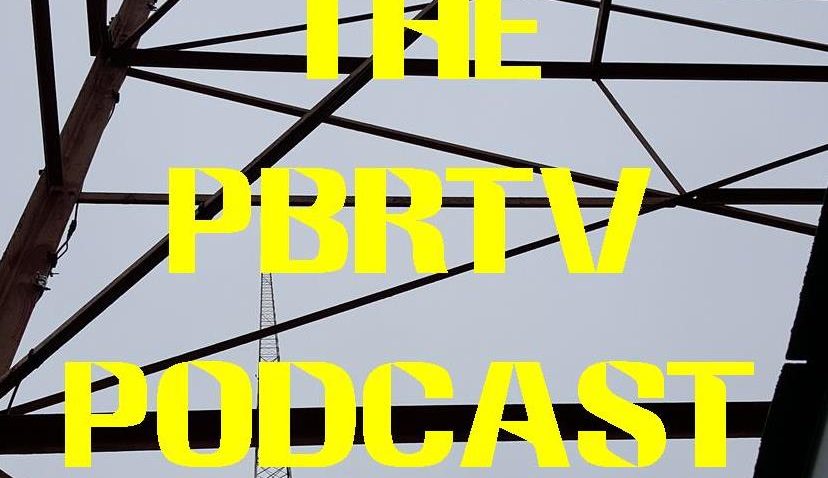Nostalgic for nostalgia
June 1, 2009. . .
But Radio-Craft was going back to 1888, when German physicist Heinrich Hertz proved that electromagnetic waves could travel through space without using wires.
Hertz used a spark-gap transmitter to send out wireless electrical pulses which he was able to remotely detect and measure.
Sadly, he saw no potential in what was briefly called “Hertzian radiation.” When Hertz’s students asked what his invention could be used for, Hertz replied, “Nothing, I guess … it’s of no use whatsoever.”
. . .
To us, 1938 seems like the early days of radio. At the very least, we might think that radio was so young that there wouldn’t be anything to get nostalgic about.
But 1938 in radio terms would be like looking back at the early days of personal computers today.
Personal or “home” computers were very expensive 25 years ago, but not very powerful, and required a fair amount of technical skill to operate. Today, practically everyone has a PC (or several), and new desktop machines can be purchased for under $400.
. . .
Radio evolved at the similarly quick pace between 1920 and 1938. In 1920, most radios had to be built by the user from parts. They didn’t work very well, and there wasn’t much to listen to.
Less than 20 years later, radios could be purchased everywhere — even at G.C. Murphy Co. dime stores around Pittsburgh — and there were plenty of stations. Radio programs had already taken on forms still familiar in 2009 — sitcoms, dramas, quiz shows, variety shows — and stars like Bob Hope and Jack Benny were already household names.
The concept of “networks” was well developed by 1938, too, and most parts of the U.S. were within reach of NBC (which then had two networks, “Red” and “Blue”), CBS or Mutual.
. . .
To celebrate the rapid progress of radio as an industry, Radio-Craft talked to several “old timers,” including RCA President David Sarnoff, vacuum-tube inventor Lee de Forest, businessman and broadcaster Powel Crosley Jr., and Pittsburgh’s Frank Conrad, a Westinghouse engineer whose experiments led directly to KDKA’s creation.
Conrad, who was in 1938 assistant chief engineer for the Westinghouse Electric & Manufacturing Co., sent the following story to Radio-Craft:
Among the many incidents associated with radio broadcasting I recall, none remains clearer in mind than a demonstration of short-wave transmission between our station at East Pittsburgh, Pa., and London, England, made before delegates to an International Radio Conference held in 1922.
Misconception as to the efficacy of the shortwave band for distance transmission was wide-spread at the time due to the well-known skip-distance phenomenon of ultra-high-frequency, whereby they tended to fade out a short distance from the station, only to come in strong again at points far removed.
. . .
For several years, those with whom I had been associated had been conducting tests with short waves and were familiar with the characteristics of such transmission, finally concluding that it would be an excellent medium for trans-oceanic operations.
In 1922, I carried a short-wave set with me to London, keeping in touch with our Pittsburgh radio station while on board ship.
At the conference, the question of short waves was discussed and some questions were raised as to their ever being of any value in radio.
. . .
One night, we invited a number of delegates to my hotel and using the short-wave receiver, with a brief length of wire tossed out the window, listened to Pittsburgh.
By cable*, I had arranged for a complete program to be sent from our Station W8XK.**
The announcer, probably thinking he was bringing us up to date with the news, read not only the entire front page of a Pittsburgh newspaper, but also several other columns inside.
. . .
The listening radio delegates heard not only their first trans-Atlantic short-wave transmission but also the greatest number of words sent over the ocean by radio up to that time.
The incident was widely discussed at the conference and the short-wave band given due importance in the consideration of future radio requirements. Now, of course, the short-wave band is widely used in radio transmissions and will continue to be the part of the radio spectrum from which new channels for radio use will be drawn.
* — By “cable,” Conrad meant “a telegram.”
** — W8XK was KDKA’s shortwave station. Although it sent out commercial broadcasts during the 1920s and ’30s, it was taken over by the U.S. Government for propaganda use during World War II and was all but forgotten by the 1950s.
. . .
Radio-Craft itself is now a subject for nostalgia. It was founded in 1929 by Hugo Gernsback, a flamboyant, sometimes less-than-scrupulous businessman (one famous writer called him “Hugo the Rat”) and inventor who published an entire string of magazines covering all facets of science and technology.
Gernsback is today best remembered for publishing some very influential science fiction from the 1920s through the 1950s. The premier science-fiction writing awards, the Hugos, are named for him.
Although it changed names and merged with other magazines, Radio-Craft survived in one form or another until January 2003, when it ceased publication as part of Poptronix.
. . .
Next Monday: In the March 1938 issue of Radio-Craft, Hugo Gernsback and his experts made predictions for the “next 50 years” of radio. How many came true, and how many remain “science fiction” today?

Two weeks ago, Mr. Monday Morning Nostalgia Fix went to the nation’s largest radio hobby convention, Hamvention in Dayton, Ohio.
Besides eating too many hot dogs, buying too much rusty old junk, and generally acting like a geek, he also picked up a reprint of the March 1938 issue of Radio-Craft magazine, celebrating “50 Years of Radio.”
. . .
“Fifty years of radio?” MMNF can hear you saying. “But radio began in 1920, when as every schoolchild knows, KDKA began operations in East Pittsburgh!”
True enough, Mr. or Ms. Strawman that MMNF made up just for this example. You could also have linked the beginning of radio to Reginald Fessenden’s 1906 experiments.

